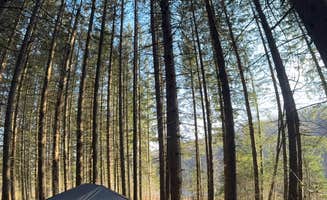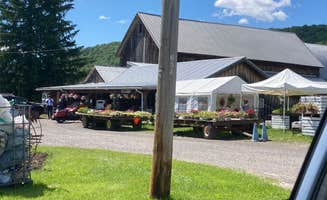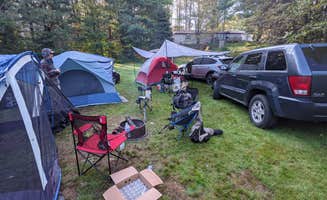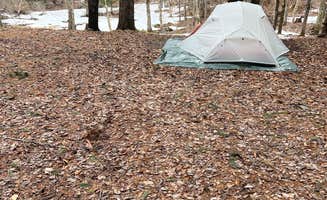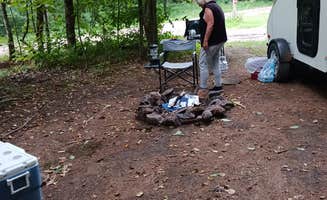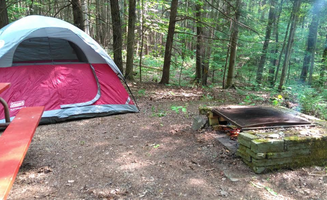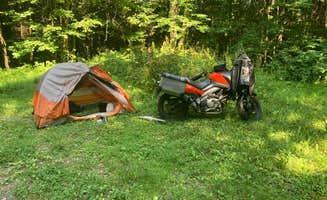Tent camping options near Liverpool, New York extend beyond the immediate vicinity to include several primitive sites in state forests within a 45-minute drive radius. The region sits at the northern edge of the Appalachian Plateau with elevations ranging from 400 to 1,200 feet. Many camping areas experience frequent summer thunderstorms from June through August, with average rainfall of 4-5 inches per month during peak camping season.
What to do
Fishing at local ponds: Cross Lake Park Campgrounds provides direct water access for fishing and swimming. "We kayaked in the lake it was a lot of fun," notes camper Sara H., highlighting the recreational opportunities available directly from the campsite.
Night sky viewing: The remote location of many Spruce Pond Camping Area sites creates excellent stargazing conditions. Campers should note that wildlife can be active at night, as one reviewer mentioned: "This was a nice spot, but the animals at the pond are very active and made a lot of noise in the night."
Trout fishing in stocked ponds: Pharsalia Y Pond offers excellent fishing opportunities in a clear, deep pond. According to Janet R., "The pond is deep and clear and stocked with brook trout, and the campsite on the east side of the pond is in an idyllic setting with good camping, fishing (canoe or kayak only), and day hikes on the Finger Lakes Trail."
Bird watching in wildlife management areas: Multiple tent camping locations provide access to designated bird habitats. At Pharsalia Y Pond, "You can also walk or drive along various state forest roads to several other ponds in the Wildlife Management area for good birdwatching," making it ideal for nature enthusiasts looking to observe local species.
What campers like
Peaceful water access: Campers consistently mention the peaceful settings at primitive sites. At Hall Island State Forest, Thomas E. noted, "There were fire ring set up, a view of the water and for an able-bodied person just a short walk up the path."
Trail connectivity: The extensive trail networks connecting campsites to regional hiking systems receive positive reviews. At Morgan Hill Forest—Onondaga Trailhead campground, Janet R. explains you can "directly access the Onondaga Trail branch of the National North Country scenic trail" and that "hiking the trail west on a day trip will bring you to the beautiful Tinker Falls."
Small site seclusion: The intimate nature of small campsites provides privacy. At Winona State Forest, Kevin C. appreciated that "the campsite was quiet and peaceful" despite being "just feet off of Bargy Road" with "the only amenity was a fire ring made of rocks."
Swimming opportunities: Several tent campsites near Liverpool provide swimming access in natural settings. One reviewer at Hall Island State Forest mentioned that "the draw for my friends and I at the time was a jump off the nearby Redfield bridge and swim in the Salmon River."
What you should know
Permit requirements: Some camping areas require advance permits. At Pharsalia Y Pond, "Camping in this DEC Wildlife Management Area campsite is limited, and requires a permit. Visit the regional DEC office at 1285 Fisher Ave., Cortland NY or call 607-753-3095... allow one week for permit to be processed."
Limited facilities: Most primitive sites have minimal amenities. At Winona State Forest, Thomas E. found "a tiny black and yellow placard that shows you where you can camp" and noted "there were some firewood set out except it was wet."
Site variations: Not all sites at a single campground are created equal. At Spruce Pond Camping Area, there are significant differences between sites, with Rose S. confirming "Port-a-potty was available" while other sites might have different access to facilities.
Weather preparation: The region experiences variable weather patterns, particularly during spring and fall. Kevin C. at Winona State Forest shared, "It rained while we were here but overall the campsite was quiet and peaceful," indicating the need to prepare for wet conditions even during camping season.
Tips for camping with families
Accessible options: Some sites offer better accessibility than others. At Morgan Hill Forest—Onondaga Trailhead campground, "there are two lovely developed campsites with parking spot right next to a cement pad with picnic tables and fire pits. These are very nice roomy wooded campsites, and the developed sites are supposedly ADA accessible."
Water recreation priority: Choose campsites with water features for added entertainment. At Nature Lover's Paradise, Carol L. values "having access to such a large network of trails, especially with the Finger Lakes area offering so much natural beauty."
Toilet accessibility: Plan bathroom arrangements carefully as facilities vary greatly. At Morgan Hill Forest, Janet R. notes "there are NO OTHER ADA amenities at these sites, eg no water source and NO toilet or outhouse right at the campground," requiring families to "come prepared to use the bushes by your campsite and leave no trace, plus bring your own water."
Site selection for tent size: Consider your tent dimensions when selecting specific sites. At Spruce Pond, smaller tents work better at certain sites, with one reviewer noting "Smaller tents would be best here," indicating that larger family-sized tents might not fit comfortably at all locations.
Tips from RVers
Limited RV access: Most primitive sites around Liverpool have restrictive access for larger vehicles. At Stoneys Pineville Campground, facilities are more accommodating for RVs with amenities including "electric hookups," "sanitary dump," "showers," and "toilets," making it one of the few options with RV services.
Road conditions: Forest roads can be challenging for larger vehicles. At Morgan Hill Forest, Janet R. advises "You can set your driving directions on Google Maps beforehand" and recommends "download the free Avenza map of the forest which will allow you to navigate real time even if you don't have cell service."
Seasonal considerations: Winter access to many primitive sites becomes difficult or impossible. RVers should note that while tent campers can often access sites year-round, vehicle access becomes limited during winter months due to unplowed forest roads and muddy conditions during spring thaw.


